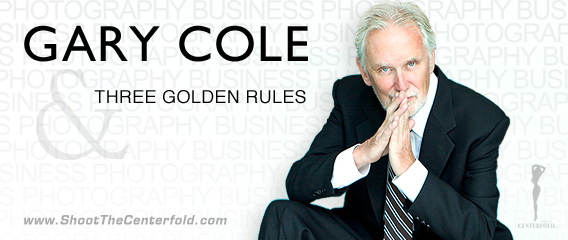GARY COLE’S THREE GOLDEN RULES
1. Quality – If you want to play in the big leagues, you must set very high standards for your photography. The digital age has made it relatively simple to be a reasonably competent photographer. After all, the cameras and post-production tools do so much of the work that photographers once had to do for themselves. However, you can’t be satisfied with “competent.” You must raise your level of expertise so that you separate yourself from the field, so that your work stands out from so much that is floating around in the marketplace. In order to achieve the highest level of quality, you need to study your craft, experiment with lighting techniques, determine what your core strengths are as a photographer and then work diligently at your craft. You must be your own toughest critic. Don’t be satisfied with anything less than perfection.
2. Getting Published – If you want sell your images to a client, to get published, the first thing you need to do is determine what your prospective client (whether it is an ad agency, a magazine, an online entity, whatever) is looking for. I really can’t emphasize this enough. So many times over my many years at Playboy, I received submissions from well-meaning photographers that had little or no relevance to what Playboy publishes. Dramatic black and white photos of homeless people or colorful landscapes from a trip to Spain don’t address the editorial categories of Playboy Magazine or the interests of its readers. So give some serious thought to who you are submitting images to and tailor your presentation to them.
Life is a gift, don’t waste it
 3. Rights and Releases – Don’t be sloppy about rights and releases and make sure you document all the expenses that go into your shooting. You should have a solid model release that you have models sign before you begin shooting. If there is remuneration involved, it’s a good idea to have the back of the check reference the release. Make certain your releases are dated. You should also have a location release handy in case it’s needed. And keep track of your expenses with receipts for every expense for which you expect to be reimbursed. Whoever you are shooting for is going to need those receipts for their tax purposes. If you have anyone working with you during the shooting, for example, an assistant working with you on a computer during the shooting or anyone doing post production work for you, you should have a signed agreement from them stating that your are the sole owner of the work and that all rights reside with you in perpetuity.
3. Rights and Releases – Don’t be sloppy about rights and releases and make sure you document all the expenses that go into your shooting. You should have a solid model release that you have models sign before you begin shooting. If there is remuneration involved, it’s a good idea to have the back of the check reference the release. Make certain your releases are dated. You should also have a location release handy in case it’s needed. And keep track of your expenses with receipts for every expense for which you expect to be reimbursed. Whoever you are shooting for is going to need those receipts for their tax purposes. If you have anyone working with you during the shooting, for example, an assistant working with you on a computer during the shooting or anyone doing post production work for you, you should have a signed agreement from them stating that your are the sole owner of the work and that all rights reside with you in perpetuity.
~Gary Cole – ShootTheCenterfold.com
Download free Model Release




















